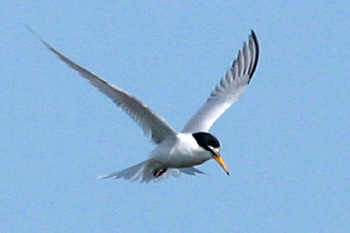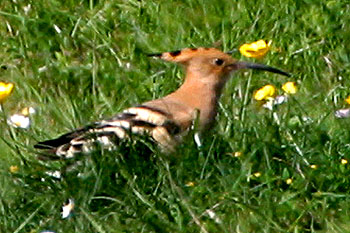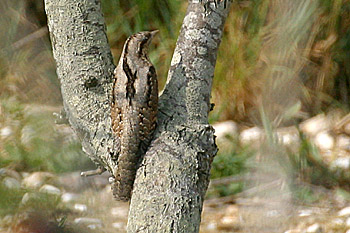West Sussex
Pagham Harbour |
|
|
The Reserve covers 1450 acres, about half of which is saltmarsh and mudflats, while the rest comprises farmland, copses, lagoons, reedbeds and shingle beaches. This is a tremendously important site for breeding, passage and wintering waders and wildfowl. Huge flocks of Dunlin, Ringed Plover, Wigeon and Pintail occur, among many others, such as Brent Geese and almost all the other winter waders. Terns breed in some numbers, as do Ringed Plovers. Peregrines are almost ever-present these days, breeding as they do on nearby Chichester Cathedral. Offshore, a wintering gathering of Slavonian Grebes is a highlight - 20+ is a regular count, while the record is over 50! Great Northern Divers and "white-winged" gulls sometimes occur too, along with passing seabirds, including Arctic Skua and auks. Sidlesham Ferry pool and the adjacent sewage works and agricultural fields attract plenty of waders and other migrants, and Water Pipits are regular in spring and winter. Rarities can occur in the area - highlights in recent years have included Trumpeter Finch, Booted Warbler, Collared Pratincole, Collared Flycatcher, Buff-breasted Sandpiper, Long-billed Dowitcher, Marsh Sandpiper, Kentish Plover, Wilson's and Red-necked Phalaropes, Tawny Pipit and Aquatic Warbler. |
 
|
Selsey Bill |
|
|
Selsey Bill is best-known for its seabird potential - in former years, it was also a well-known passerine migration spot, but house building has severely limited the potential of late. Nevertheless, scarce migrants like Hoopoe, Serin and other overshoots are seen annually. Seabird passage is at its best in spring, with the big feature being Pomarine Skua, which pass through in the first three weeks of May. Each year, one birder inherits the title "Selsey Pom King", awarded for the highest total count of the spring. Other birds to be seen include all the regular up-Channel migrants, especially terns, scoter, Manx Shearwater, Arctic Skua and sometimes Storm Petrels. Autumn passage is much less predictable, but is inevitably best after major storms. At this season, Bonxies tend to feature more strongly. The neighbouring fields to the west around Bracklesham have recently been purchased by the RSPB and have a great deal of potential - they held a Buff-breasted Sandpiper a few years ago, and on one speculative autumn visit, we ourselves found Wryneck and Monarch Butterfly there. |
 
|